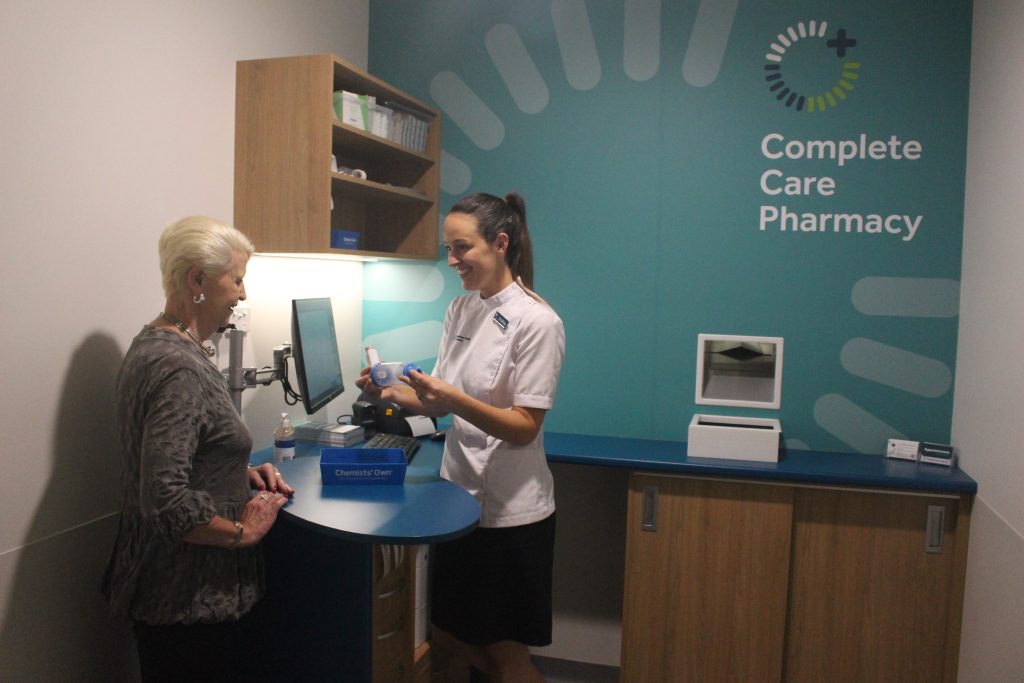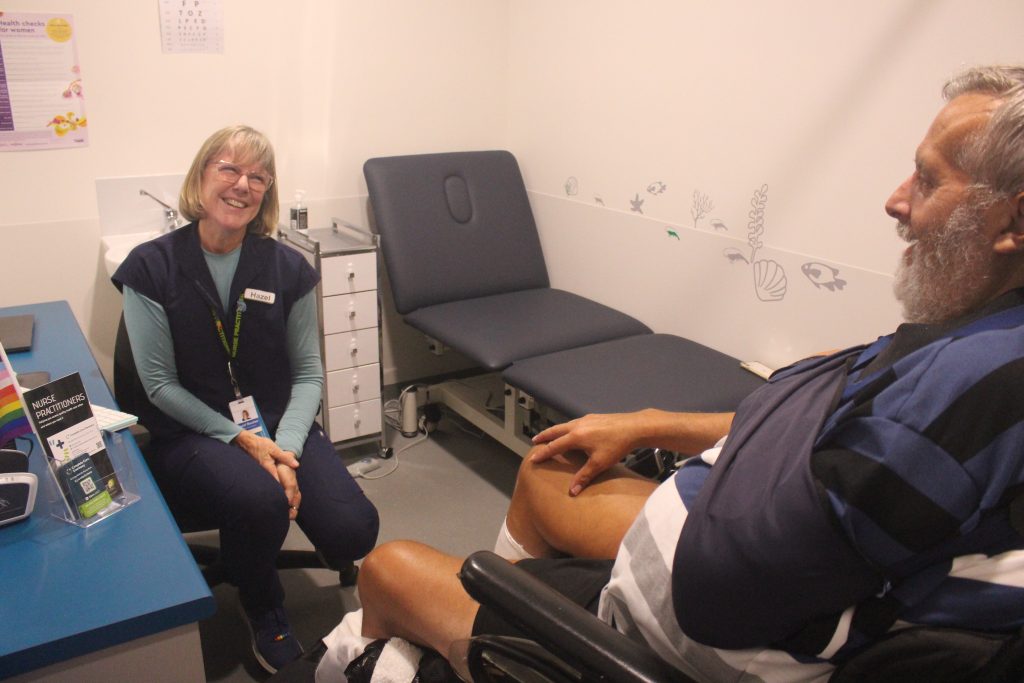Prescribing complete care
Posted on August 8, 2024

How a Hobart pharmacy is using innovation and collaboration to ensure person-centred care
A nurse practitioner, lactation consultants, private consulting ‘pods’, and even a robot – they’re all part of an innovative model helping a Hobart pharmacy keep locals well and out of hospital.
Key features of the approach taken by the Complete Care Pharmacy at Rosny Park are working as a team – both within the pharmacy and with other primary care services such as GPs – and putting the patient at the heart of all they do.
When a patient walks through the doors, they are greeted by a pharmacist who triages them depending on whether they need advice or to fill a prescription.
If the patient seeks health advice, has a new prescription, needs a vaccination or more, then a pharmacist working on the floor will take the patient into a small private consultation room called a ‘pod’.
The pharmacist can then privately recommend treatments for their health issue or, if they have a prescription, they can dispense the medication while they are in the pod, with the medication being delivered to the pod by the robot. If the issue is out of their scope of practice, the pharmacist can refer to the appropriate health professional.
Kristina Fox, community pharmacist and pharmacy co-owner, says the innovative model was born of necessity.
“The model is radically different to your traditional community pharmacy style,” Kristina says.
“We no longer have any conversations about health on the shop floor. We conduct our consultations in the pharmacist pods, ensuring patient privacy.
“In these rooms, we can do everything – we can vaccinate, we solve minor ailments, we can dispense prescriptions immediately.
“It’s much more rewarding from a professional perspective, as patients open up about their health concerns which enables us to effectively use our clinical knowledge and provide the best solutions to our patients.”
Kristina says collaboration is a huge part of the new model.
“Being able to work alongside other allied health professionals, who have a broader scope than us, allows us to offer the complete solution to our patients,” she says.
“We’ve got lactation consultants, a diabetes educator, a continence nurse and now a nurse practitioner.
“Patients can come in and get scripts renewed from our nurse practitioner if they can’t get in to see their GP in a timely manner.”
Kristina says the pharmacy is responding proactively to the current healthcare environment.
“We’re providing a solution to patients so that they don’t have to go to emergency for something that is relatively minor,” she says.
“Our new model works complementary to traditional GP practices, and we get a lot of referrals from them.”
The Rosny Park pharmacy piloted this model of care, which is now being replicated in communities across Tasmania, and even extending to mainland Australia. A number of pharmacies are currently undergoing a change in their layout and using custom-built software to facilitate the model.
As part of the model expansion, software is being developed to ensure the advice the Complete Care team gives their patients is shared with the patients’ GPs.
Carol Jackson is a new patient of the pharmacy and decided to book an appointment with nurse practitioner Hazel Bucher for a time-sensitive concern.
“I thought, well I’ll ring the doctor, but I’m not going to get in for weeks,” Carol says.
“Then I realised they had a nurse practitioner here, so I rang and got in to see Hazel for the first time last week. I was very impressed.”
Hazel says having a nurse practitioner working at the pharmacy makes a big difference for patients.
“The majority of the patients I see are on-the-day appointments or walk-ins – in fact it’s 69% of my work. I can write scripts and treat infections, and often though it’s the nursing perspective that makes a difference.
“I take the time to talk to people and help them understand their diagnosis and I help translate health information – something I’ve been doing all my career but now I hold extra qualifications and I am also able to offer treatments as needed.”
“It’s just a convenient one stop shop for the patient, they can come and see me, and the pharmacists complete the visit with dispensing the prescriptions or other supportive products.”
Hazel explains how she works with different health professionals to coordinate care for one of her patients, Richard Gawthorpe.
“Richard is seeing me regularly and information goes between his health professionals such as his wound care nurses,” Hazel explains.
“For another example, Richard has seen his cardiologist, so I’ll receive a copy of those notes, as I wrote the referral, as does his doctor, so we’re all on the same page.
“When his doctor takes any leave, Richard continues with his regular appointments and I continue manage his healthcare needs, addressing any concerns.”
Richard, who suffered a stroke two years ago and is now in a wheelchair, is moved to tears when speaking of the level of care he experiences here.
“I’ve been looked after by the girls in the pharmacy for many years,” Richard says.
“We’ve built up a really good relationship and I can talk about anything.
“And when I met Hazel, I was just wrapped up in a nice tight bundle. It’s actually fantastic.”
Richard has a weekly appointment with Hazel.
“If something’s not right, we can get to it almost straight away, and then Hazel will ring my GP,” he says. “She’ll talk to him and there’s liaison between the two.
“I don’t want to have another stroke. I don’t want to go back to hospital.
“I want to make sure I’ve got good health professionals around me as an umbrella, working together, knowing what’s going on to prevent anything else from going wrong.
“I spent eleven months in the hospital so to come out and have people care about you and your health care, that’s important to me.
“It’s been such a blessing.”

This story features in Issue 18 of our Primary Health Matters magazine. Click here to read the rest of the issue.
